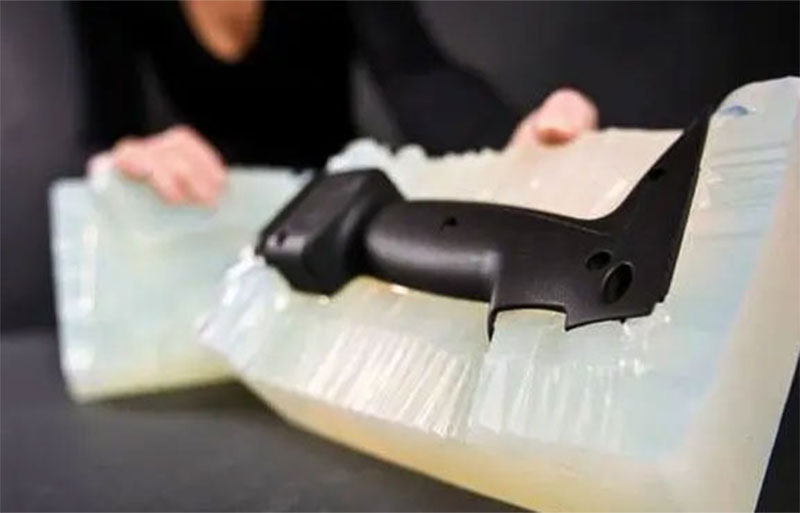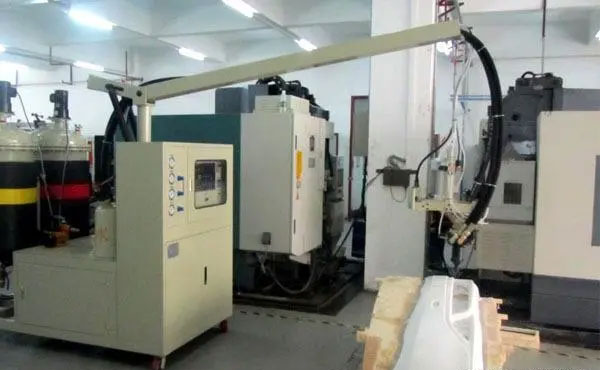Vacuum casting and Reaction Injection Moulding are common methods for hand board processing, and their principles may appear similar on the surface. The original can be made through CNC machining or 3D printing. For more complex structures, the original can be made through 3D printing, and then a silicone mold can be made using the original. Then, batch replication can be carried out using this silicone mold. However, there are still some differences between the two methods. Below, we will analyze the differences between vacuum casting and Reaction Injection Moulding in prototype processing.
1, Vacuum casting
Vacuum casting is a common processing method that uses the original template to create a silicone mold in a vacuum state, and uses PU material for pouring in the vacuum state, in order to clone a replica that is the same as the original template. It is mainly used for small batch customization of plastic prototypes, usually in the tens to hundreds of plastic prototypes. If this method is used for processing, it is more cost-effective.

The material properties of vacuum casting products can simulate the performance of most existing engineering materials. Common materials include domestic PU, imported PU, transparent PU, soft PU, Saigang, ABS, PP, PC high temperature resistant ABS, etc. Transparent parts such as PC, organic glass, thermoplastic elastomers such as TPR, TPR, TPU, and various soft materials such as silicone and rubber can be replicated. At the same time, various colors can be added to the replicated product to meet various appearance requirements. Product replication is not affected by volume, complexity, or various structures, making it easy to mold, with a short cycle and fast results.
2、 Reaction Injection Moulding
Reaction Injection Moulding, also known as low-pressure reaction injection molding, is a new process applied to rapid molds. It mainly involves mixing two component polyurethane materials and injecting them into the rapid mold at room temperature and low pressure, forming products through chemical and physical processes such as material polymerization, cross-linking, and curing. It has the advantages of high efficiency, short production cycle, and low cost. Suitable for small batch trial production in product development process, as well as the production of small batch, structurally simple covering parts and large thick and uneven wall thickness products.

The European and American countries that use Reaction Injection Moulding the most are relatively more mature in terms of materials and infusion technology. China was the first to use Reaction Injection Moulding, which was suitable for the automotive industry. In recent years, there have been relatively more Reaction Injection Moulding processes used in the production of medical products and instruments in China. As the production quantity of instruments and medical products is not large, the annual sales quantity of a product is only tens or hundreds of sets. If steel molds are used for injection molding, the cost is relatively high. There are also many medical products with relatively thick or uneven wall thickness, which are not suitable for injection molding processes. The surface curvature is complex and not suitable for vacuum forming processes. However, Reaction Injection Moulding is different. Thick wall products can be injected, and the wall thickness can be uneven, which is normal. The maximum thickness of the perfusion wall (5-6mm) can be around 30mm, There are many materials used in the mold (such as aluminum mold, resin mold, plastic mold, gypsum mold, etc.), and there are many choices of injection materials, including imported materials, domestic materials, materials close to ABS, and materials close to PP.
Summary of differences: Vacuum casting is mainly used to replicate small volume prototypes (such as ABS, PC, acrylic hand boards, etc.) in small batches, while Reaction Injection Moulding is used to replicate large volume prototypes, such as car bumpers, medical instrument case shells, instrument panel hand boards, etc.




